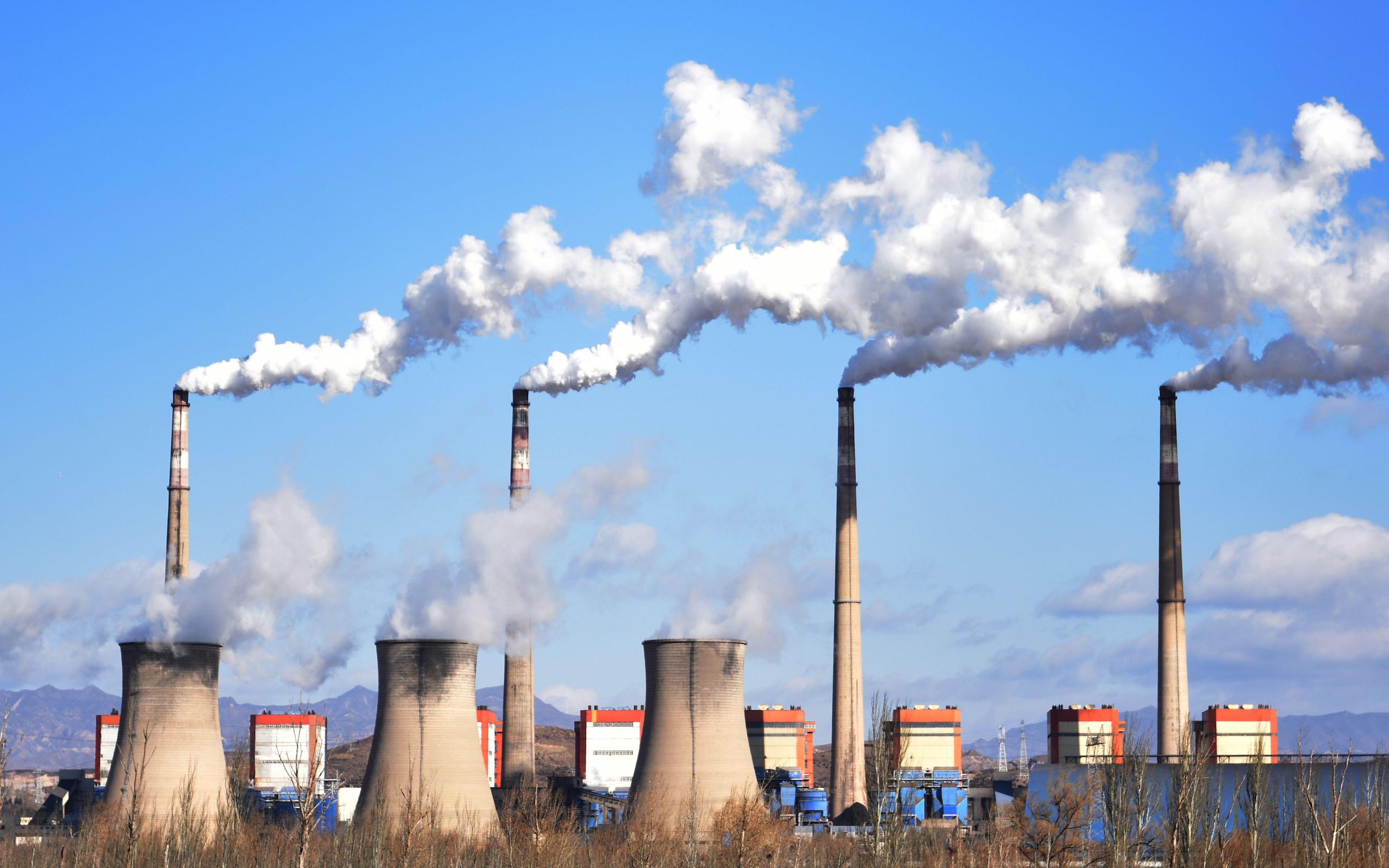Editor’s note: In this article, Zhang Shuwei, chief economist at Draworld Centre in Beijing, considers how best to judge when China has reached its target of peaking emissions before 2030. He proposes using a 10-year observation period. Moreover, to avoid necessary climate action being put off until after 2030, he suggests new targets be set for 2025-2035, possibly covering share of renewables in the energy mix, and even total energy consumption and carbon emissions.
When the Paris Agreement was signed in 2016, countries committed to “pursuing efforts” to limit the global average temperature rise to 1.5C above pre-industrial levels. Of late, the issue of how to measure this temperature increase against that threshold has been much debated: how long an observation period is required?
Twenty years is used in the recent Sixth Assessment Report by the UN Intergovernmental Panel on Climate Change, with the midpoint of those two decades designated as the year 1.5C is breached. The drawback of this method is that the breach can only be identified 10 years after the event. In response, a group of scientists has proposed that the 20-year period should instead have the current year as its midpoint, and cover observations from the last 10 years, as well as projections of the next 10. This would give policymakers more time to respond appropriately to the breach.
Whatever the frame of reference used, there will always be measurement complications. Most notably, there exist cyclical fluctuations in temperature at all scales – from day to night, month to month, season to season – along with non-anthropogenic climatic factors such as sunspots and El Niño.
Similarly, the carbon emissions of individual economies do not rise or fall linearly. How then can progress towards emissions targets be assessed? And, in the case of China, how can the country’s peak carbon goal be best made measurable? The challenge of doing so resembles the complexity of measuring the 1.5C target.
What counts as peaking?
Worldwide, emissions trends are prone to some level of volatility year to year as a result of economic, societal and climatic factors, as well as surprise events. This is true even in economies with long-term downward emissions trends. In Germany, for example, it was primarily due to the coronavirus pandemic, and not just structural changes, that the country managed to meet its 2020 target for reducing emissions by 40% compared to 1990. The following year, emissions rebounded along with economic activity, as expected. Specifying measurable emissions for a particular year is a common approach around the world for setting national targets, even though it discounts cyclical economic factors and unforeseeable events.
In 2020, China declared its commitment to reach peak carbon emissions before 2030 and achieve carbon neutrality before 2060. The 2060 goal is clear-cut and can be measured straightforwardly: there will be four decades of steadily declining carbon emissions, by the end of which emissions will have been neutralised.
The same cannot be said for carbon peaking, however. This is because the goal does not target emissions strictly within the year 2030, but rather the emissions dynamic over the previous and ensuing years. “Peaking” means emissions are lower after that point in time than before it. It requires action before 2030, but can only be verified well after 2030; in fact, due to the volatility of emissions trends, several years would have to pass before achievement of the goal could be confirmed with 100% certainty.
Just how many is the question and, to facilitate legal and political accountability, it must be answered in advance.
Recommendation: A 10-year observation period
Excluding the effects of extreme events, annual carbon emissions growth in China has been in the 0-10% range for the past three decades. There have been several distinct phases in the energy consumption and emissions dynamic during that time, with each economic cycle typically lasting 10-12 years.
When China’s economic take-off was in its initial phase in 1990–2002, emissions grew at an average of 4.4% per year. Following its admission to the World Trade Organization in 2002, the country embarked on a “golden decade” of economic growth. During this period, coal consumption rose as a share of the energy mix, and the global oil price hit an unprecedented high in part due to demand from China, while emissions increased at an average of 9.7% annually. Over the following decade (2012-2022), with GDP growth slowing and policies for energy efficiency and emissions reduction kicking into gear, there was a marked drop in the rate of energy consumption growth and a fall in coal’s share of the energy mix. Emissions growth, meanwhile, averaged 3% annually.
| Annual average growth rate | Fluctuation range | Extreme events | |
| 1990-2002 | 4.3% | [-4.3%, 10%] | International sanctions in the early 1990s; Asian financial crisis of 1998 |
| 2002-2012 | 9.1% | [3%, 18%] | Electricity shortages and economic overheating beginning in 2002 |
| 2012-2022 | 1.5% | [-1.5%, 4%] | Pandemic years: 2020-2022 |
No one can be sure if future patterns will mirror or differ from those of the past. What we can say is that as long as the increase in renewable energy capacity is more than the increase in total energy demand, fossil-fuel use and thus emissions growth will stall. This is unquestionably true for this single year, but real-world changes do not arrive with such predictable regularity.
As we have seen, a 10-year emissions observation period roughly covers a complete economic cycle, so let’s have a look at how carbon peaking could be assessed on this basis.
With 2030 as the target year, emissions could logically be seen as having peaked if the 2031-2035 average is below the 2030 level. Allowing for possible short-term factors affecting the year 2030, the comparison period could be extended back in time to take in average annual emissions from 2026-2030, for example. A 10-year observation period of this kind would cover the established economic cycle. So long as average annual emissions for 2031-2035 do not exceed those of 2026-2030, then peaking can be said to have occurred. But whatever the measurability provision, it must be given in advance.
An intermediate target by 2026
The above approach addresses the issue of measuring the 2030 target in practice. It also, however, reveals a further policy-related problem: we would have to wait until at least 2035 to judge whether China has met its peak carbon goal.
That seems a long way off. What we need, then, are nearer-term goals, especially considering the direction of present-day policy.
By now, policies and plans, all major changes, seem to be put off until 2030 and beyond
The indications are that China will need to change course in order to bring its emissions down more quickly and efficiently, particularly in relation to the continued development of coal power and reform of the power grid institution. By now, policies and plans, all major changes, seem to be put off until 2030 and beyond. This gives the impression that around that year, many areas will need tremendous changes overnight.
It could make sense to set additional measurable targets for 2025-2035; for example, targets covering energy mix, share of renewables and even total energy consumption and carbon emissions. This would minimise the risk of sectoral reform tasks being pushed back beyond 2030 to the point where they eventually come too late.
| Document | Date issued | Target by 2030 | Post-2030 target |
| Working guidance for CO2 peaking and carbon neutrality | September 2021 | The increase in coal consumption will be limited in 2021-2025 and phased down in 2026-2030. | By 2060, a green, low-carbon, circular economy will be fully established along with a clean, low-carbon, safe and efficient energy system. Energy utilization efficiency will be at advanced international levels, non-fossil share of energy consumption will be over 80%, and carbon neutrality will have been successfully achieved. |
| Action plan for CO2 peaking before 2030 (State Council) | October 2021 | By 2030, the share of non-fossil energy consumption will reach about 25% and CO2 emissions per unit of GDP will have dropped by more than 65%, compared with 2005 levels, successfully realising the goal of peak carbon by 2030. In trans-regional transmission of electricity from renewable sources, the scale of supplementary coal power will be strictly controlled, and it will be ensured in principle that no less than 50% of electricity transmitted via newly constructed lines is generated from renewable resources. | Peak carbon by 2030 (below 2030 levels from 2030 onwards) |
| Opinions on improving institutional mechanisms and policy measures for green and low-carbon energy transition (NDRC, NEA) | February 2022 | By 2030, China will have formed an energy production and consumption pattern where non-fossil fuels not only satisfy the increase in energy demand, but also replace existing fossil fuels at scale, and where the ability to guarantee energy security is comprehensively enhanced. | Not measurable or relevant |
| Blue Book on the development of new power systems (NEA) | June 2023 | Moderate growth in coal power installed capacity and output will continue on the way to 2030, and there will be a focus on aspects of the overall planning and optimisation of regional arrangements, including the transmission end of large-scale new-energy bases, major load centres, and principal grid nodes. Coal power will be the ultimate guarantor of power security, transitioning towards basic assurance and system-adjustment functions. | Relying on innovations in clean, low-carbon technologies such as coal-biomass cofiring, CCUS (carbon capture, utilisation and storage) and improved carbon-reduced combustion, for accelerating the clean and low-carbon transformation of coal power. |
Measurable targets for peaking carbon
At last year’s National Conference on Ecological and Environmental Protection, China’s president, Xi Jinping, emphasised that while the 2030 and 2060 carbon goals are set in stone, the approach to those goals – and the pace at which they will be achieved – are matters for China alone to determine. It is a perfectly reasonable point.
A good emissions reduction target needs to be ambitious, credible and coherent. If it is to be deemed as such, the target should, first and foremost, be measurable.
Uncertainty about the future is what makes it difficult to determine how feasible a goal is. We can infer the credibility of China’s 2060 target from modelling and assessment approaches, and the strength of present-day policies.
Assessing carbon peaking, however, involves a longer timescale. It would therefore be more feasible to stipulate a shorter observation period, which can also double as a tool for reconciling international commitments with the domestic emissions-reduction agenda, as seen in the country’s five-year plans.
By setting the observation period as 2026-2035, the test for determining whether the 2030 target has been met could be whether average emissions in 2031-2035 were higher than those in 2026-2030. And it would be possible to make that determination by 2036.
An alternative, which would make assessing the outcome more straightforward, would be for countries to specify a level of carbon emissions when they update their Paris Agreement climate action plans (known as nationally determined contributions, or NDCs) in 2025. This would have a bearing on the possible tightening of China’s climate targets, and would represent a significant breakthrough at the level of domestic policy and international climate governance.
Correction notice: The original version of this article stated that China had committed to peaking its carbon emissions by 2030 and reaching carbon neutrality by 2060. On 21 January 2025, this was corrected to before 2030 and before 2060.








